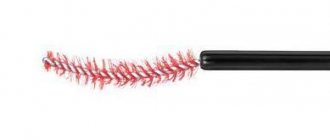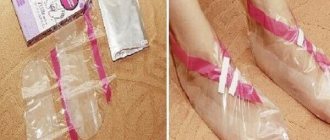Fillers that are popular today are, of course, not a circular facelift, but still not as simple a procedure as it might seem at first glance. So-called “beauty injections” are associated with certain risks that must be taken into account before deciding on such a method of rejuvenation. Why fillers sometimes cause harm to health, AiF.ru told Candidate of Medical Sciences, dermatocosmetologist Natalya Taran.
Article on the topic What will replace beauty injections? Gymnastics for the face from Vera Shakhova
Human factor
Unfortunately, there is no escape from this. It would not be superfluous to remind you that the injections must be carried out by a doctor who has all the documents and certificates confirming his education and specialization. This can be either a plastic surgeon or a cosmetologist.
Explains clearly and looks good. 7 signs of a competent cosmetologist Read more
What types of fillers are there and why you shouldn’t be afraid of them?
Share:
Patients often say at the appointment that they are ready to do a lot: do a deep facial peel (and then peel off for a week), do laser rejuvenation (and wait until the swelling goes away), decide on a non-surgical SMAS lifting... “But let’s not do fillers.” When I start to find out why fillers are so unpopular, it turns out that many people think that fillers are something dangerous. That they distort their appearance beyond recognition. That fillers are necessarily injections into the lips, after which the lips become the dominant feature of the face. That these are grotesque cheekbones, and that they are forever. So - everything is not true! More precisely: any beautiful instrument can end up in inept hands or in the hands of a person with a distorted idea of what is normal and beautiful. For those who are skilled, modern fillers can create miracles and beauty.
Modern fillers are an absolutely necessary tool for a cosmetologist. They help fill in and smooth out wrinkles or replenish lost volume that we lose not only with age, but also after weight changes and hormonal fluctuations. Moreover, the drugs not only mechanically fill the volume, but also stimulate the production of collagen and elastin. Thanks to fillers, today, without plastic surgery, you can correct the shape of the face and eliminate its asymmetry, adjust the chin, the tip or wings of the nose, the shape of the cheekbones, and fill depressed scars on the face or body.
What is filler? Filler can be translated as filler. That is, it is an inert drug that either fills the missing volume or adds volume where it is needed. In order to use filler, there are aesthetic, cosmetic reasons, and there are also medical ones.
What can fillers do?
- Anti-aging therapy
As we age, our faces lose soft tissue volume because the so-called fat pads that give our faces a youthful appearance are reduced. With age, the volume of muscle and bone tissue decreases. The threads of collagen and elastin that literally hold our face together weaken. There is a movement of fat packets and muscles downwards, towards gravity. As a result, the face takes on the shape of a triangle with the base at the bottom. I talked about all this in more detail earlier. Fillers help restore the face to its V-shape, a sign of youth. They replenish lost volume where it is needed, restore the oval, fill wrinkles, moisturize the skin (which is also an indicator of youthful skin), and modern drugs stimulate the production of collagen and elastin (which is the elasticity of the skin). But filler is not only an opportunity to recreate the very same features that you once had before.
- Aesthetic indications
Fillers help correct aesthetic defects. For example, using filler you can correct the shape of your nose (raise the tip, correct a hump). Add symmetry and harmony to the face by “correcting” a sloping chin. Add volume if the patient is bothered by a very flat midface. Or to add sensuality to the lips with a clinically narrow red border of the lips - I talked about this in detail here.
What types of fillers are there? Fillers are biologically inert substances, that is, those that do not interact with our body and do not affect its functions, but at the same time they are completely physiological and often have an affinity with our body. Fillers are completely absorbed in our body (this is called biodegradation), eliminated over time and therefore are completely safe and their components and their breakdown products do not cause side effects. Today in modern cosmetology two types of fillers are used:
- Fillers based on hyaluronic acid
- a biological polymer that is produced in our own body and which is found in our natural fluids (for example, in joints or saliva). Due to the fact that the hyaluronic acid polymer can have chains of very different lengths, such fillers can be either very dense and viscous , or more liquid, fluid. Thanks to this, the cosmetologist can choose fillers with hyaluronic acid of different densities for different needs or combine them to get the desired effect. This is similar to a sculptor choosing different tools to get the desired result. In addition to their affinity for the natural components of our body, fillers with hyaluronic acid are also good because they attract water. Thanks to this, we get not only additional volume, but also additional hydration of the skin and mucous membranes. For example, the injection of such a lip filler additionally helps when lips become dry and cracked.
- Fillers based on calcium hydroxyapatite
Hydroxyapatite is an inert mineral that is found in bones and teeth; It is used in orthopedics for bone augmentation and for coating implants. Fillers contain hydroxyapatite in the form of very small microspheres of the same size, which are evenly distributed as a suspension in the filler gel. Immediately after the injection of such a filler, the gel filler fills the wrinkle. And after a few months, when it resolves, calcium hydroxyapatite microspheres stimulate the production of new collagen. Thanks to this, we not only fill the volume, but also restore the skin to a healthy appearance, firmness and elasticity. Calcium hydroxyapatite fillers were first used in HIV-infected patients to restore significant volume loss in their faces. The fact that they have been used safely in immunocompromised patients is the best evidence of their inertness and safety. And only after (but quite a long time ago to be tested in practice) these fillers migrated to aesthetic medicine.
- Polylactic acid fillers
These are injected deep into the skin tissue, so they last for a long time, up to two years (this is a plus). the downside is that the result is not immediately noticeable and to get it, you will need not one, but 3-4 procedures with an interval of about one month. These fillers can remove both fine wrinkles and very deep folds, marks from scars and defects.
How does a doctor choose which filler to take? Unfortunately, attempts to treat modern cosmetology products as goods in a store, and choosing them yourself are doomed. “Let’s inject me with this filler - my friend did it, she liked it.” Or, “I read about him in a magazine, he’s the newest.” “Let’s do everything in one bottle.” - these are all very bad ideas. A good doctor will immediately refuse. And that's why. Just as a sculptor or artist needs different tools, materials or paints to work, so in order to get a natural, harmonious and beautiful result, a cosmetologist also needs different tools. For example, fillers with different densities or compositions: dense forms the oval of the face or corrects the shape of the nose, a combination of fillers of different densities fills the missing volume on the face or corrects the volume of the lip, and thanks to a drug with polylactic acid, you can also compensate for the lack of collagen if suddenly the collagen framework has lost its density and the skin looks loose because of this. Our doctors regularly undergo training in new drugs, various administration techniques and combined techniques, so they are familiar with the latest scientific advances in this area. You, of course, have the right to know what the doctor’s choice is based on and discuss it before the procedure begins, but since he is responsible for the result, the decision is his.
What are the contraindications for fillers? Contraindications for the injection of fillers are the same as for any injections in cosmetology: acute infectious diseases, exacerbation of chronic diseases, fever, skin rashes, allergic reactions, eczema, pregnancy and breastfeeding, as well as cancer.
How long do fillers last? This depends on individual characteristics, as well as the type of filler. As I wrote above, polylactic acid filler lasts the longest - up to 2 years. Then - calcium hydroxyapatite fillers. Fillers made from very dense hyaluronic acid can “stand” for about a year precisely because they are dense and dissolve more slowly. “Soft” fillers that are injected into the superficial layers of the skin, for example, wrinkles around the eyes (accordingly, in this area, need to be injected more often), dissolve most quickly. Hyaluronic acid is destroyed by the enzyme hyaluronidase - it is produced in the human body. The activity of this enzyme is different for each person, so the duration of action of hyaluronic acid fillers will also be different for each person. But even if your enzyme is very active, this is not a problem - you can always add filler later and adjust the volume. Any good cosmetologist is guided by this rule: it is better to add it later than to overdose the drug. If suddenly the filler with hyaluronic acid is overdosed (doctors call this hypercorrection) or everything is fine, but after a few days you decide that you did not like the effect of the procedure - its consequences are reversible. This is not difficult and is done by introducing a special safe enzyme - hyaluronidase, which dissolves hyaluronic acid within 24 hours.
5. Violation of facial expressions
The density of the selected preparation is of paramount importance. If the doctor chooses a soft, plastic filler to create volume, then the desired result will not be achieved, since such drugs cannot hold their shape. The whole procedure will simply be useless. It is worse if a bulky and non-plastic drug is injected into an area with increased facial activity. Fillers can lead to disruption of this very activity; unevenness on the skin, compaction and fibrosis can also occur.
Botox and fillers are the same thing
Botox and fillers are completely different things. Moreover, my blood pressure rises when I hear the phrase: “Oh, can I inject Botox into my lips?” or, for example: “Doctor, inject me with Botox on my lips.” When I hear these requests, my face turns red.
Subscribe to our page on Instagram!

Botox is a microdose of a toxin that is isolated from a microorganism and specially processed. This substance is injected into the muscles in order to weaken their contraction. Botox in no way gives any relief or any volume to the face.
Subscribe to our Facebook page!
What are fillers? Fillers are preparations, often based on hyaluronic acid, that work with volumes. That is, they help restore the triangle of youth or make your lips beautiful, sensual and full. And they have no effect on muscle contraction after injection into the face. Therefore, do not confuse these two terms - these are completely different drugs, which have completely different points of application.
In what cases is it necessary to get rid of filler?
If filler injections are performed by an incompetent specialist, then defects appear that do not at all beautify the appearance. In this case the symmetry of the face is disrupted , puffiness, bumps and filler migration to other areas of the face appear.
If elasticity is lost and facial tissues slip, then filling the gaps with gel will not restore beauty , but will only aggravate it. For example, if a girl has a full and/or round face and large cheeks, then filler injections will make her face look puffy , which is a common reason for getting rid of the gel under the skin.
Complications and side effects appear when using old gels , especially polyacrylamide ones. If a needle gets into a vessel, bruising, redness and swelling may occur, even if the gel contains an antioxidant - manitol polyhydric alcohol. In this case, you should not rush and demand that the cosmetologist remove the drug. An experienced doctor will first administer a course of injections that strengthen blood vessels.
The reason for getting rid of filler in the nasolabial area may be:
- Pronounced overcorrection. A convex-concave deformation appears in the area of the nasolabial fold, sometimes with translucency of the material if a large amount of hyaluronic acid was injected superficially or entered a vessel. In this case, one cannot hope for rapid self-resorption of the drug. Tissue fibrosis occurs at the injection sites and the gel no longer wants to lie flat , so overcorrection is fraught with aesthetic complications: bumps and indentations, the development of tissue ischemia - the appearance of whitened skin and the appearance of a lemon peel.
- Alcohol consumption, sun exposure and physical activity. There may be bruising, itching, swelling and even pain at the site where the needle punctures. But this phenomenon is considered normal and goes away on its own or under the influence of an ice compress. But intermittent tumors may appear immediately and over several years with a relapse from drinking alcohol, direct sunlight on the beach, or intense sports.
- Violation of antiseptics. An inflammatory process may occur at the injection site due to tissue infection. Less commonly, the pathological process is provoked by caries or sinusitis, ARVI, etc.
- Herpes and granuloma. If a person often suffers from the herpes virus, then when injecting hyaluronic acid to correct the nasolabial fold, it may worsen . If the body seeks to fence itself off from a foreign gel, it encloses it in capsules, peculiar granulomas (small nodules, often inflamed) and “throws it out” to the surface of the skin.
- Vascular reactions to gel injections . The anatomy of the vessels of the nasolabial fold is such that when they are compressed or blocked, ischemia and necrosis can occur.
- Individual hypersensitivity to fillers. Overly sensitive people may experience an allergic and autoimmune reaction to hyaluronic acid, despite its high biocompatibility with body tissues.











